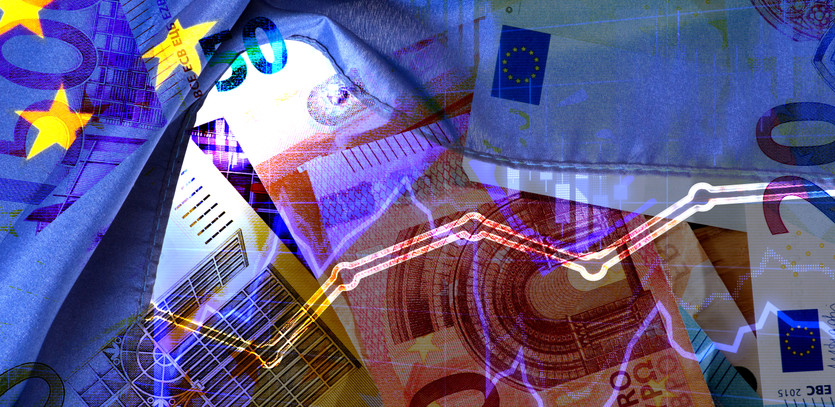The New Investment Frontier: Global Opportunities
In our hyper-connected era, where the digital age facilitates swift transactions and global economic insights, a plethora of investment opportunities beckon. For the astute investor, diversification has transformed from being a mere buzzword to an actionable strategy, transcending traditional boundaries.
For U.S. denizens, the investment horizon isn't limited to homegrown assets. There's a whole world out there, and Europe, with its robust economic landscape and legacy corporations, shines brightly on the investment map.
Strategies to Immerse in European Equities
Diversifying your investment into European stocks isn't simply a matter of throwing a dart on a map. It's an art, combining insight, strategy, and precision. With Europe being a mosaic of rich economies, dynamic corporate cultures, and enticing fiscal landscapes, the right strategy can make all the difference in shaping the trajectory of your portfolio. Here’s a deeper dive into the avenues and their nuances:
-
Harnessing the Power of Specialized Mutual Funds & ETFs
- The Golden Gateway: Mutual funds and ETFs focused on European companies offer a potent blend of wide market access coupled with affordability.
- Why It Works: Especially ideal for those with limited capital, these funds and ETFs pool together diverse European assets, giving you a slice of the entire pie.
- The Double-Edged Sword: While they seem alluring, it's vital to weigh the pros and cons.
- The Upsides: Get a diversified taste of Europe's corporate giants without the hassle of individual stock research.
- The Downside: Inherent in these pooled instruments are potential unrealized capital gains, which can sometimes throw a spanner in the works. Additionally, the inflexibility of fund compositions means that you're bound by their predetermined sector and industry choices. Essentially, you celebrate the victories but also endure the hiccups of the fund's collection.
- The Golden Gateway: Mutual funds and ETFs focused on European companies offer a potent blend of wide market access coupled with affordability.
-
Unlocking Potential with American Depository Receipts (ADRs)
- The Bridge to Europe: Think of ADRs as the modern bridges of the financial world, connecting the New World's investors to Old World stocks.
- Inside ADRs: Some ADRs come with the seal of approval from the foreign companies they represent. Others, however, are the brainchild of depository banks spotting a market need and seizing it.
- Operational Elegance: These financial maestros perform a ballet of transactions, seamlessly transforming foreign stocks into tradable domestic securities.
- The Mechanism: Beyond the actual purchase of stocks, these banks play a pivotal role in dividend management, conversion, distribution, and even the intricacies of tax treaty optimization.
- The Bridge to Europe: Think of ADRs as the modern bridges of the financial world, connecting the New World's investors to Old World stocks.
-
Direct European Stock Acquisition: The Unadulterated Experience
- The Quintessential European Dive: Envision owning a piece of a storied Italian vineyard or a high-tech German automaker. It's as European as it gets.
- Brokerage Ballet: The choreography of acquiring these shares might differ based on your chosen brokerage. But, once you’ve set foot, the journey is exhilarating.
- Currency Conundrums: The European financial seas have their waves and tides. Navigating them requires tact.
- Fluctuation Fiascos: On paper, the value might seem volatile due to currency oscillations. An understanding of these waves ensures you're not tossed around.
- The Tax Labyrinth: Ah, the game of international taxes—a game where knowledge is the ultimate power player.
- The Silver Lining: Deep dive into U.S.–European tax treaties, and you might discover paths leading to fiscal relief and advantages.
- The Quintessential European Dive: Envision owning a piece of a storied Italian vineyard or a high-tech German automaker. It's as European as it gets.
-
Tapping into Domestic Giants with Global Footprints
- The Unseen European Essence: There's more than meets the eye when investing in some of America's behemoths. Beneath the surface, European roots might be thriving.
- Revelation in Numbers: A snapshot of the S&P 500 in 2018 paints the picture vividly: a chunk of their sales trace back to foreign soils, offering inadvertent European exposure.
- The Unseen European Essence: There's more than meets the eye when investing in some of America's behemoths. Beneath the surface, European roots might be thriving.
This deep dive into the world of European equities is not just about expanding horizons, but also about fine-tuning strategies to harness the true potential of the European financial landscape. Every strategy, with its distinct flavor and allure, beckons the discerning investor to explore, analyze, and conquer.
Frequently Asked Questions (FAQs)
Investing in European equities isn't just about the numbers and strategies. It's also about understanding the nuances, the timing, and the external influences. Here, we untangle some of the common curiosities associated with diving into European stock waters.
-
The Dance of European Exchange Timings
-
Question: When does the European stock market open and close?
-
Answer: Europe, with its rich tapestry of countries and exchanges, doesn't operate on a singular clock.
- The Broad Window: Typically, European stock markets operate somewhere between 3:00 and 11:30 a.m. EST.
- Nuances to Note: Each country, with its distinct culture and traditions, celebrates different holidays. As a trader or investor, being attuned to these bank and stock exchange holidays is pivotal to master the timing game.
-
-
The U.S. – European Stock Ballet
-
Question: How does a U.S. stock market crash affect European countries?
-
Answer: Financial markets are intricate webs of connections and sentiments, and ripples in one region can lead to waves in another.
- The Connection Quotient: While U.S. and European stocks share sentiments, they don't always mirror movements. Each moves to its own rhythm, influenced by regional sentiments.
- Sentiment Spillover: A significant tremor in the U.S. market can sometimes send shockwaves across the Atlantic. It might cause European investors to reevaluate and, in some cases, reshuffle their portfolios. However, predicting the exact magnitude or swiftness of such reactions remains more of an art than a science.
-
Understanding the European investment landscape is a journey, and these questions form just a glimpse of the broader picture. Every answer, every insight brings the discerning investor a step closer to mastering the European equities dance.





